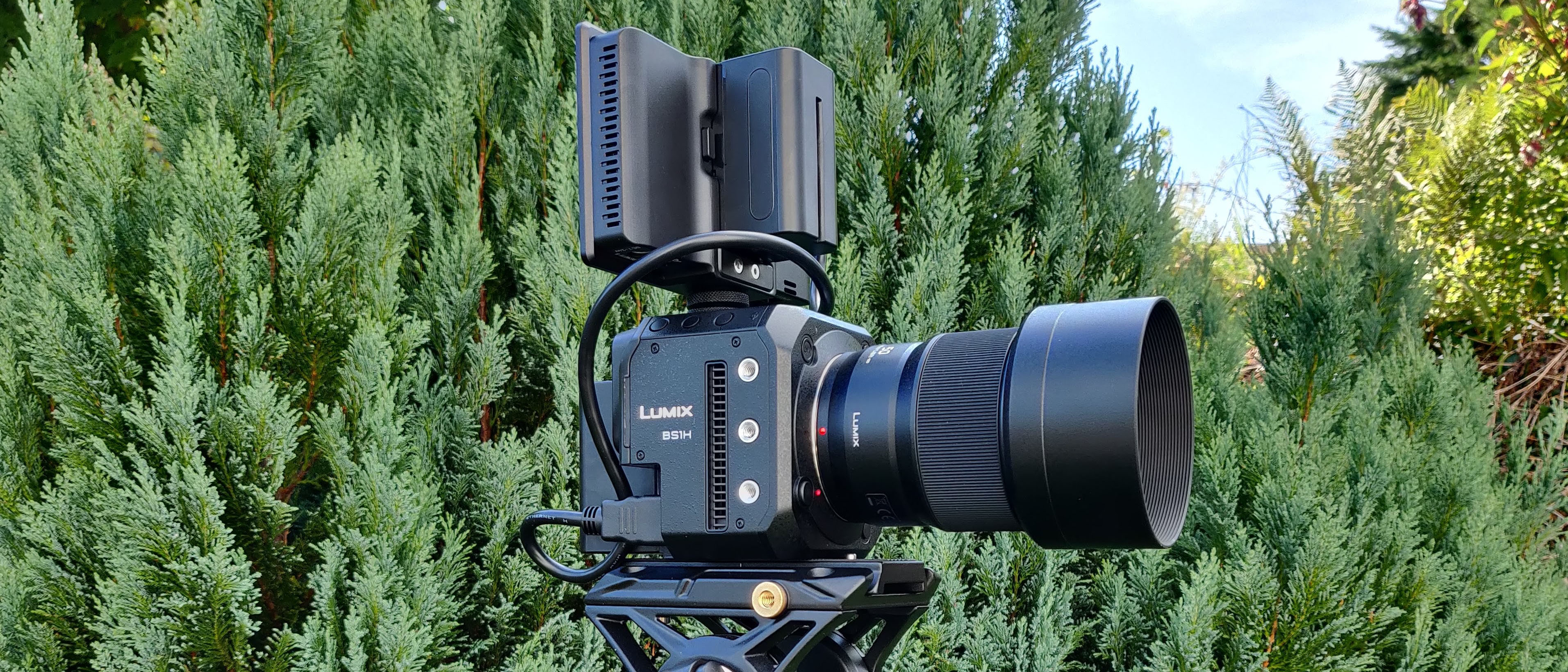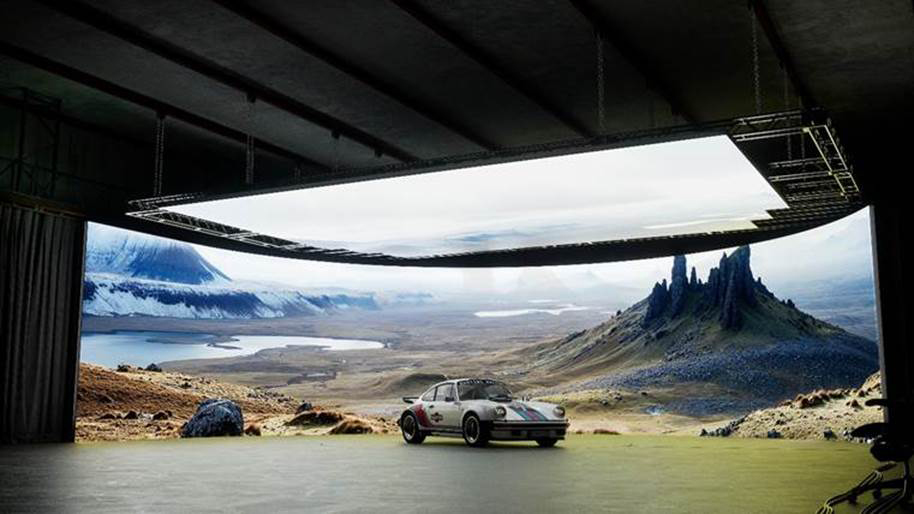Digital Camera World Verdict
The Panasonic Lumix BS1H is a very compact, powerhouse cinema camera targeted at true filmmakers. It provides a small form factor with outstanding spec and I/O that means it can be used by solo filmmakers right up to big productions. Not every cinema camera is as tiny as the BS1H and that’s where it shines. It provides the smallest form factor possible with the highest full frame specs any filmmaker could want and is a very competitive alternative to the Super 35 RED Komodo, which is double the price!
Pros
- +
All-in-one package
- +
5.9k capture
- +
Uses inexpensive media
- +
Solo or crew operation
Cons
- -
Slight learning curve
- -
Only available in Leica L-mount
- -
No V-mount battery option
Why you can trust Digital Camera World
The Panasonic Lumix BS1H is an example of a square box-style camera that has become an increasingly popular choice amongst filmmakers at all skill levels shooting various genres – but one thing remains consistent across the board; they all choose it for its convenient go-anywhere form factor.
This isn’t the first try for Panasonic. In 2020 Panasonic announced the Panasonic Lumix BGH1, its first box-style camera body featuring a Micro Four Thirds sensor. Fast forward to November 2021, and the BS1H was announced, with the same body style, but now with a more powerful full frame sensor that can provide up to 5.9K full frame video recording. Let’s find out how this mini powerhouse stacks up in today's market.
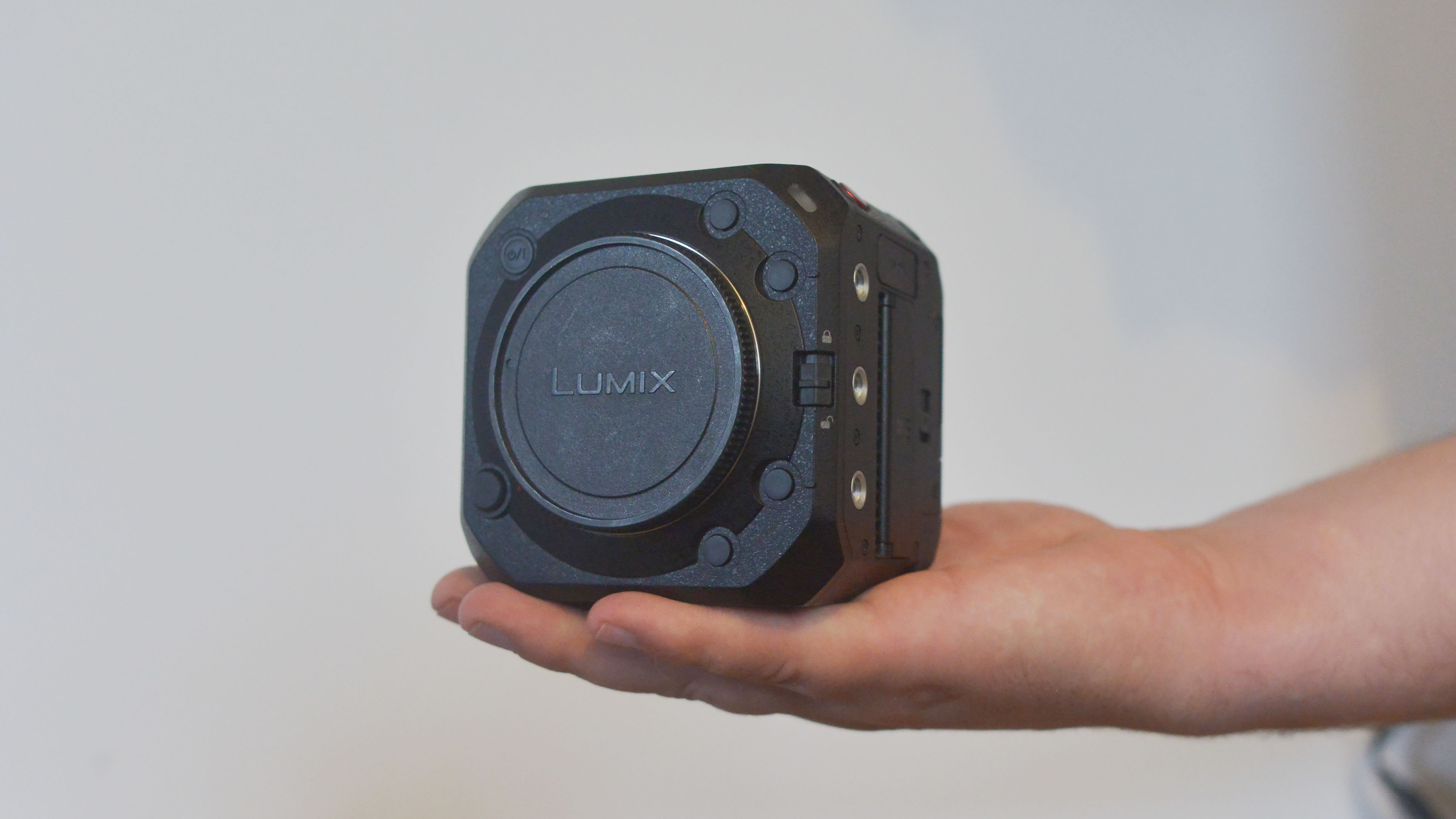
Specifications
Sensor: Full frame CMOS
ISO range: 100 to 51,200 (Extended: 80 to 204,800)
Dynamic range: 14 stops
Lens mount: Leica L mount
LCD: no
Auto focus: Contrast detect, tracking
Recording format: H.265/H.265 Long GOP/MOV 4:2:2 10-Bit
4096 x 2160 at 23.98p/25p/29.97p [100 to 400 Mb/s]
3840 x 2160 at 23.98p/25p/29.97p [100 to 400 Mb/s]
3328 x 2496 at 23.98p/24.00p/25p/29.97p [150 to 400 Mb/s]
1920 x 1080 at 23.98p/29.97p/59.94p [100 to 200 Mb/s]
1920 x 1080 at 50i/59.94i [50 to 100 MB/s]
H.265/H.265 Long GOP/MOV 4:2:0 10-Bit
5952 x 3968 at 23.98p/24.00p/25p [200 Mb/s]
5376 x 3584 at 25p/29.97p [200 Mb/s]
5888 x 3312 at 23.98p/25p/29.97p [200 Mb/s]
4096 x 2160 at 23.98p/24.00p/29.97p/48.00p/50p/59.94p [200 Mb/s]
H.265/H.265 Long GOP/MOV 4:2:0 10-Bit
1920 x 1080 at 100p/119.88p [150 Mb/s]
1920 x 1080 at 47.95p/48.00p [100 Mb/s]
Connectivity: USB-C, HDMI, 3.5mm mic, 3G-SDI, BNC timecode, BNC Genlock, RJ45 LAN, 2.5mm Sub-mini LANC control input
Storage: Dual SD/SDHC/SDXC slots
Battery: Panasonic AG-VBR
Dimensions (WxHxD): 3.7 x 3.7 x 3.1" / 9.3 x 9.3 x 7.8cm
Weight: 1.3lb / 585g
Key features
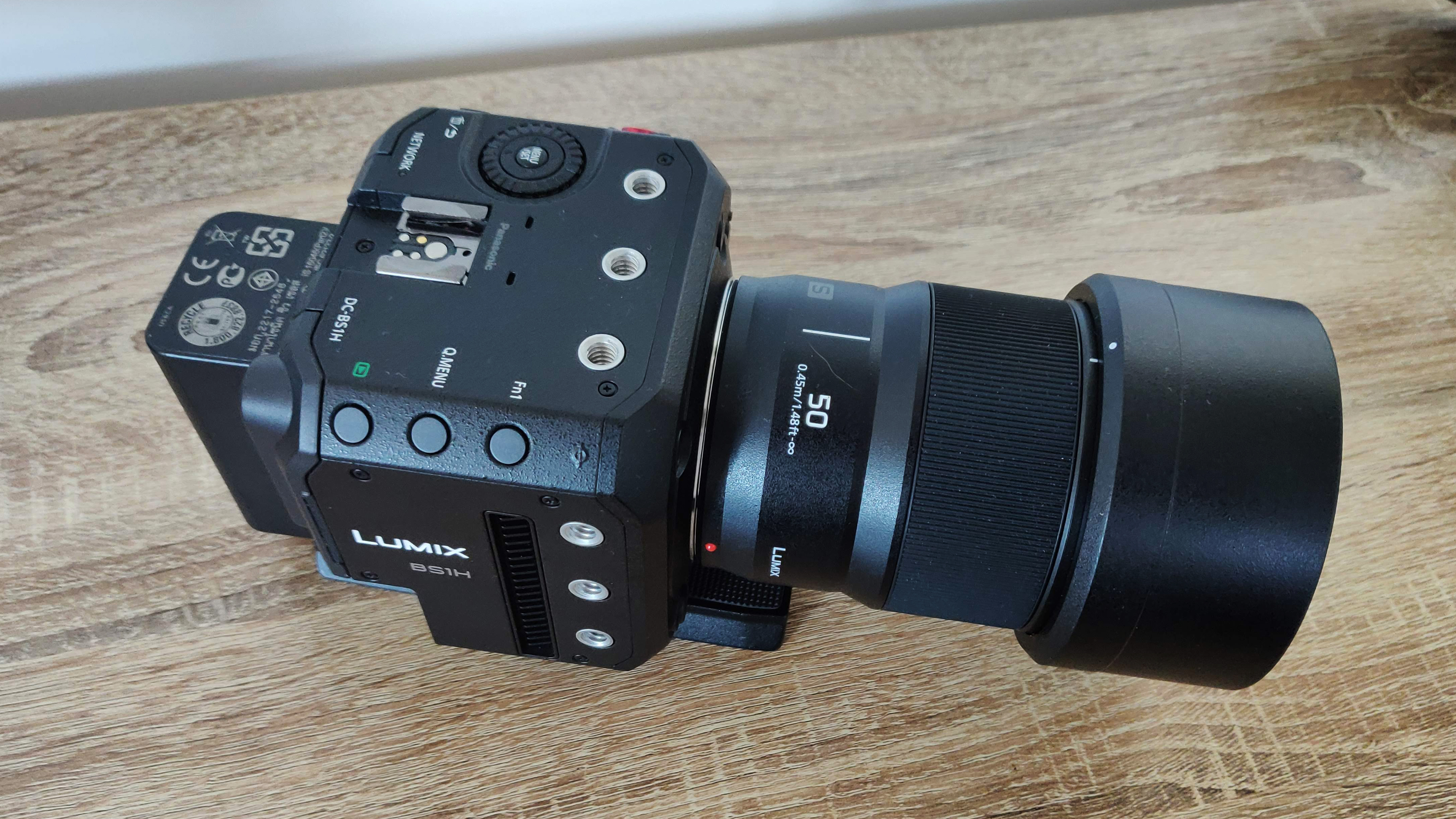
The first thing that many will wonder is how small is “small” with these box-style cameras, and in fact the size of the Panasonic Lumix BS1H is tiny, measuring just 3.7 x 3.7 x 3.1" / 9.3 x 9.3 x 7.8 cm. It's truly a small camera body. Packed inside this incredible package is a full frame 24.2 megapixel sensor that is able to capture 5.9K in 10-bit 4:2:2 up to 25p, while 4K Cine and UHD 4K can record up to 60p. All of that in a package that is hardly more bulky than your favourite coffee mug – it's very impressive.
But what makes this camera so special is its ability to become a multimedia tool, not just for solo filmmakers, but industry professionals too. With multiple recording formats and resolutions from 5.9K to 4K anamorphic support, this box-style camera really can pack a punch to the bigger, bulkier, and far more cumbersome names familiar in Hollywood or on film sets around the world. A
Also, the ability to have an extremely portable video solution that records on highly available media – SD cards with a dual slot configuration – is a godsend, and a highly practical alternative to the more expensive CFExpress cards options out there.
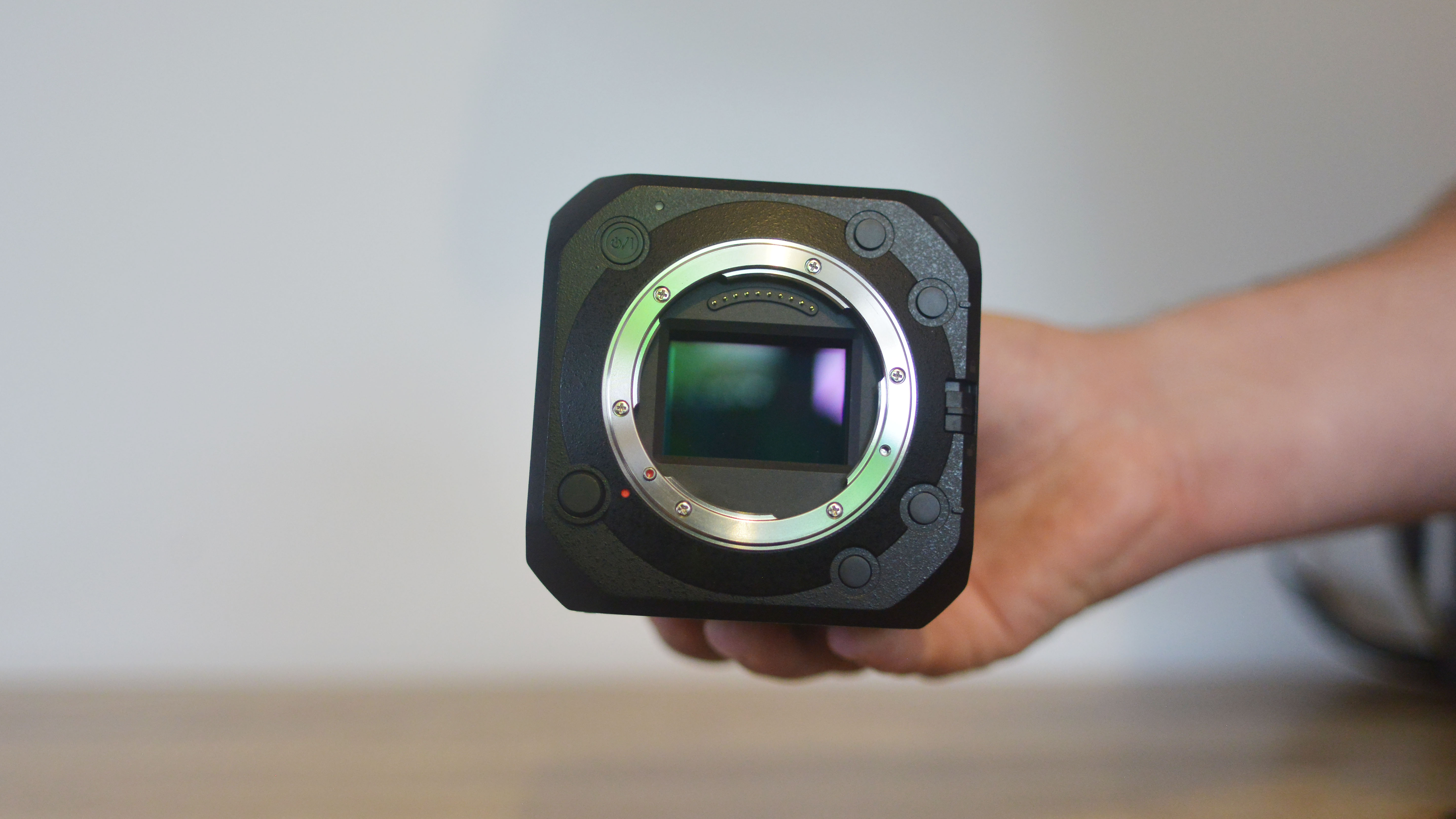
There is also a great layout of I/O ports of the kind normally found on cameras 10x the price of the BS1H. From 3G-SDI out, HDMI, BNC timecode, BNC Genlock, RJ45 LAN for streaming, you name it the B1SH has it, and that’s why this camera can be picked up by a solo filmmaker or a whole production team and produce something spectacular!
The cherry on the cake is that the Panasonic Lumix BS1H can be powered off a single Panasonic AG-VBR59 battery and will last a good 2 hours or more before depleting…. That is mind-blowing!
Oh course we have to talk about mounting options as this is basically a box wrapped around a sensor. The BS1H accommodates nine ⅜” mounting options across its three prominent positions at the top, left, and right sides of the camera. It also features two ⅜” tripod mounting options so you can fit a number of quick release plates to the bottom and be sure it will fit with your chosen fluid head system.
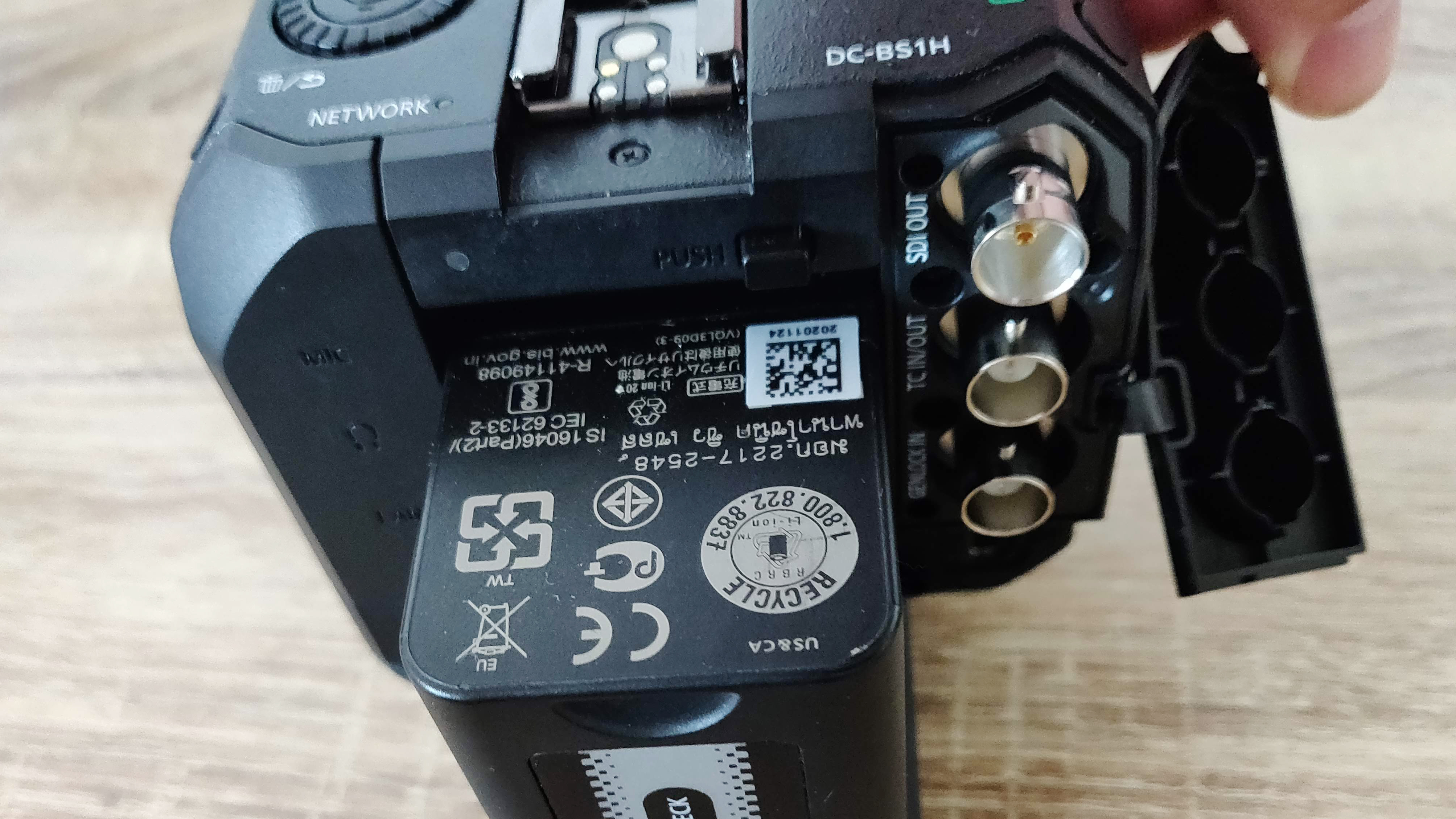
Build and handling

The overall build of the Panasonic Lumix BS1H is outstanding. At first glance you might think its construction would be plastic, but in fact it's constructed of aluminium, which provides a good weight in the hand, while not actually being heavy to hold – body only the BS1H weighs in at just 1.3lb/20.64oz. However, to use the body you will need to add a battery, lens, monitor, and possibly a handle to get a run-and-gun go-anywhere camera rig, which will naturally increase that overall weight by quite a bit.
I personally used a Portkeys LH5P II 5.5” monitor and the Panasonic 50mm f/1.8 to conduct this review and thought the size to weight ratio was perfect. The only thing I would change would be to add a side handle to give myself a bit more stability when shooting, but knowing that’s how most solo filmmakers will rig this out, there is nothing to complain about with its overall layout.
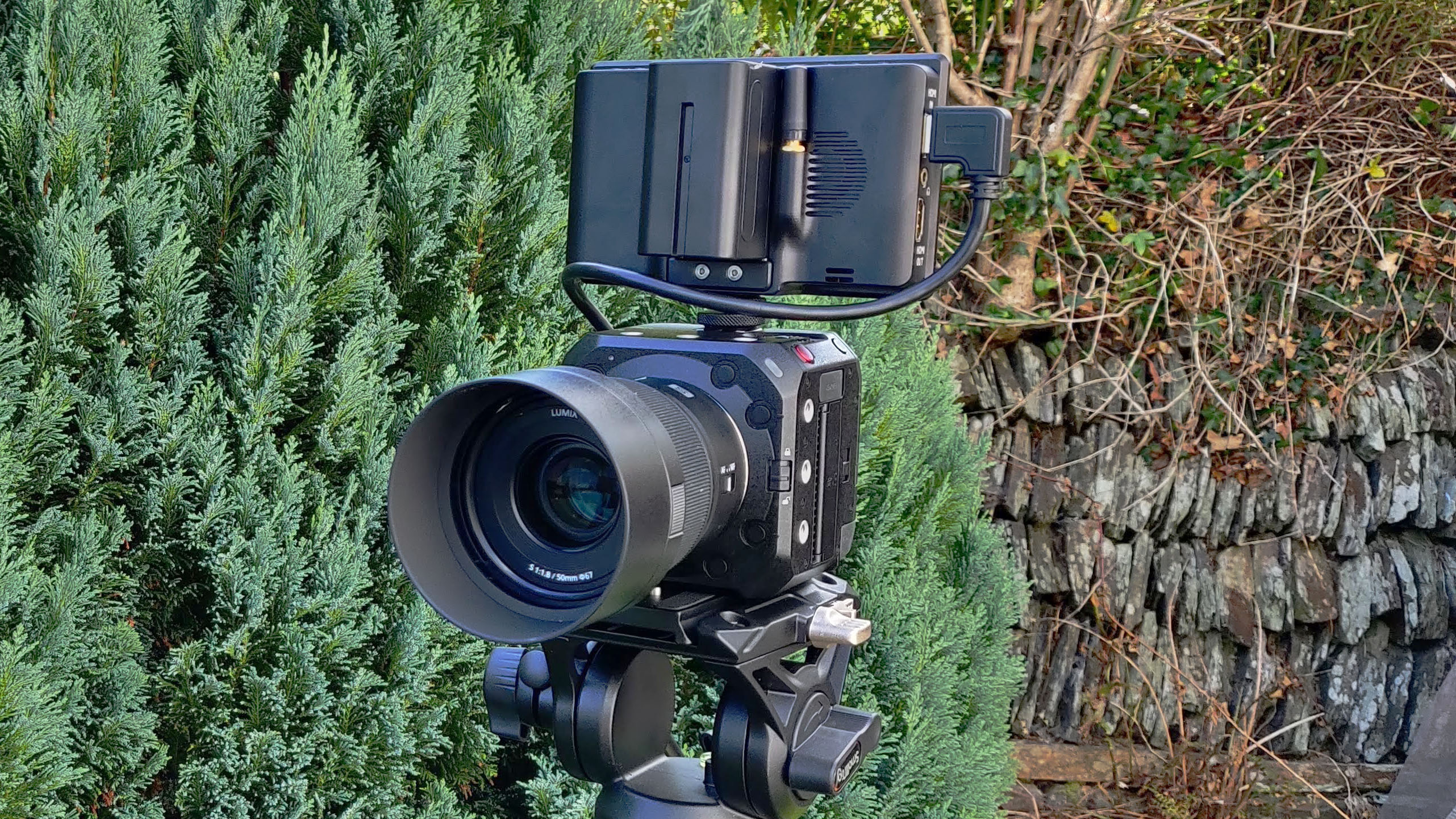
Navigating the menus has also been thought about logically by Panasonic. This being a smaller than normal cinema camera, eight buttons have been conveniently placed around the body to help the user quickly navigate through menus at a push of a button. Some are even located around the mount of the camera and act as customizable function buttons.
Top left on the BS1H is the scroll wheel and menu select and set controls. This is incredibly user friendly and does help you to scroll through the menus at pace when needed or to use the scroll wheel as an aperture adjustment for Panasonic lenses or for ISO settings. One remark I will make is if you do not have a swivel head mount on your monitor and you are using a more traditional cold-shoe adapter, it might become a little tricky to use this scroll wheel, and I would recommend mounting the monitor to the front mounting option on the top of the body.
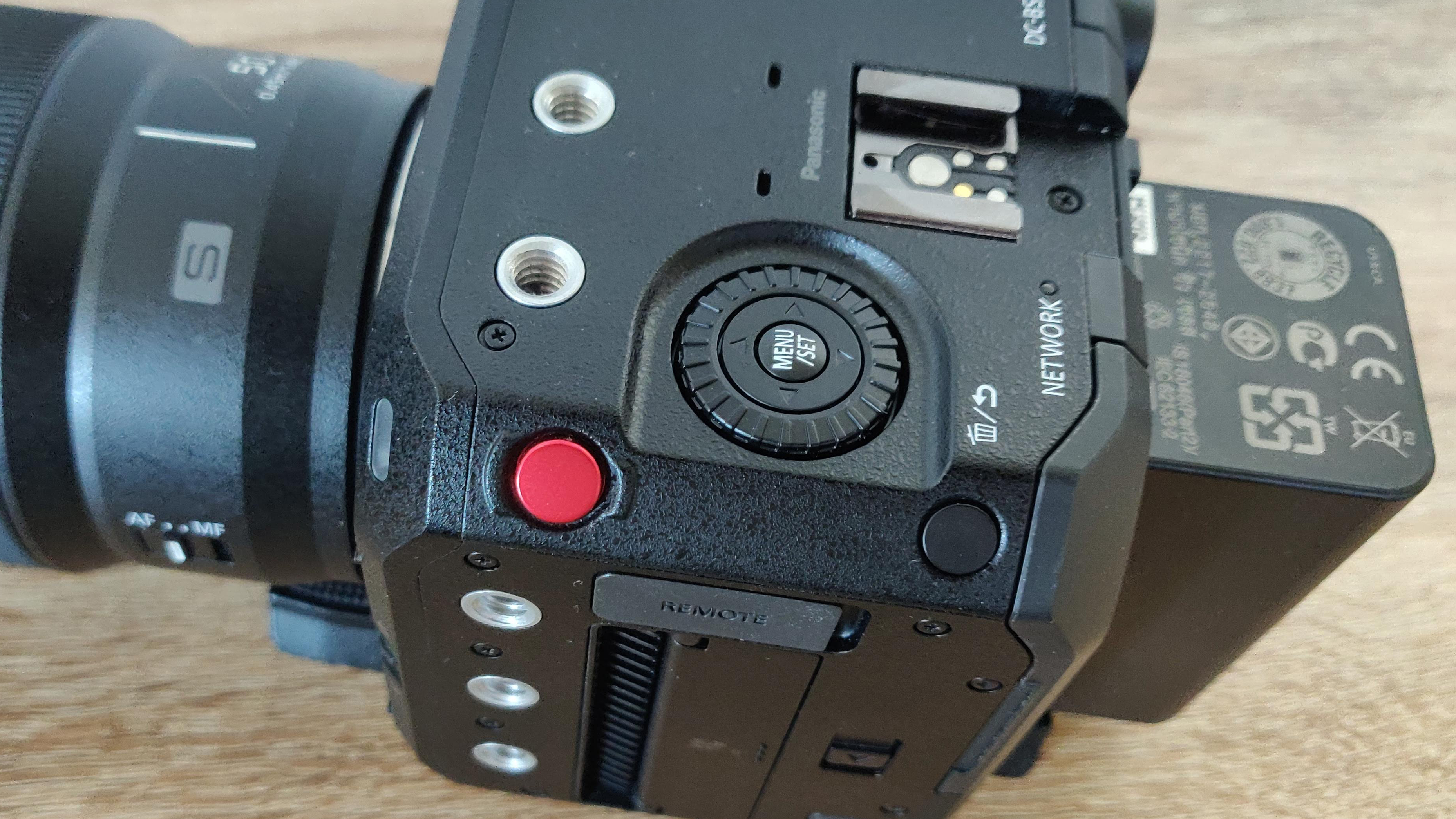
The shooting experience is a great one, once you realize this is not your typical cinema camera, by that I mean you have to make sure your settings are dialed in before shooting. Being such a tiny design, the 8 function buttons paired with the scroll wheel can do most things, but it can only be used with one function at a time, whereas traditional cinema cameras have multiple buttons, scroll wheels etc due the the larger size of the devices. This isn’t a knock against the BS1H’s practicality, but you have to think differently when using a small box-style camera.
Performance
Video Sample
Running a standard one person interview test and a YouTube style to-camera piece I can say I was impressed by the on-board microphone. It will produce wonderful “scratch” audio, I would even go as far to say you could probably use it for a full YouTube setup. However, plug in a shotgun microphone and the preamps pick up sound wonderfully, and of course this would be the recommended approach for any filmmaker, but it's nice to know that the microphone is good to handle those times when you don’t have an external microphone to hand
Verdict
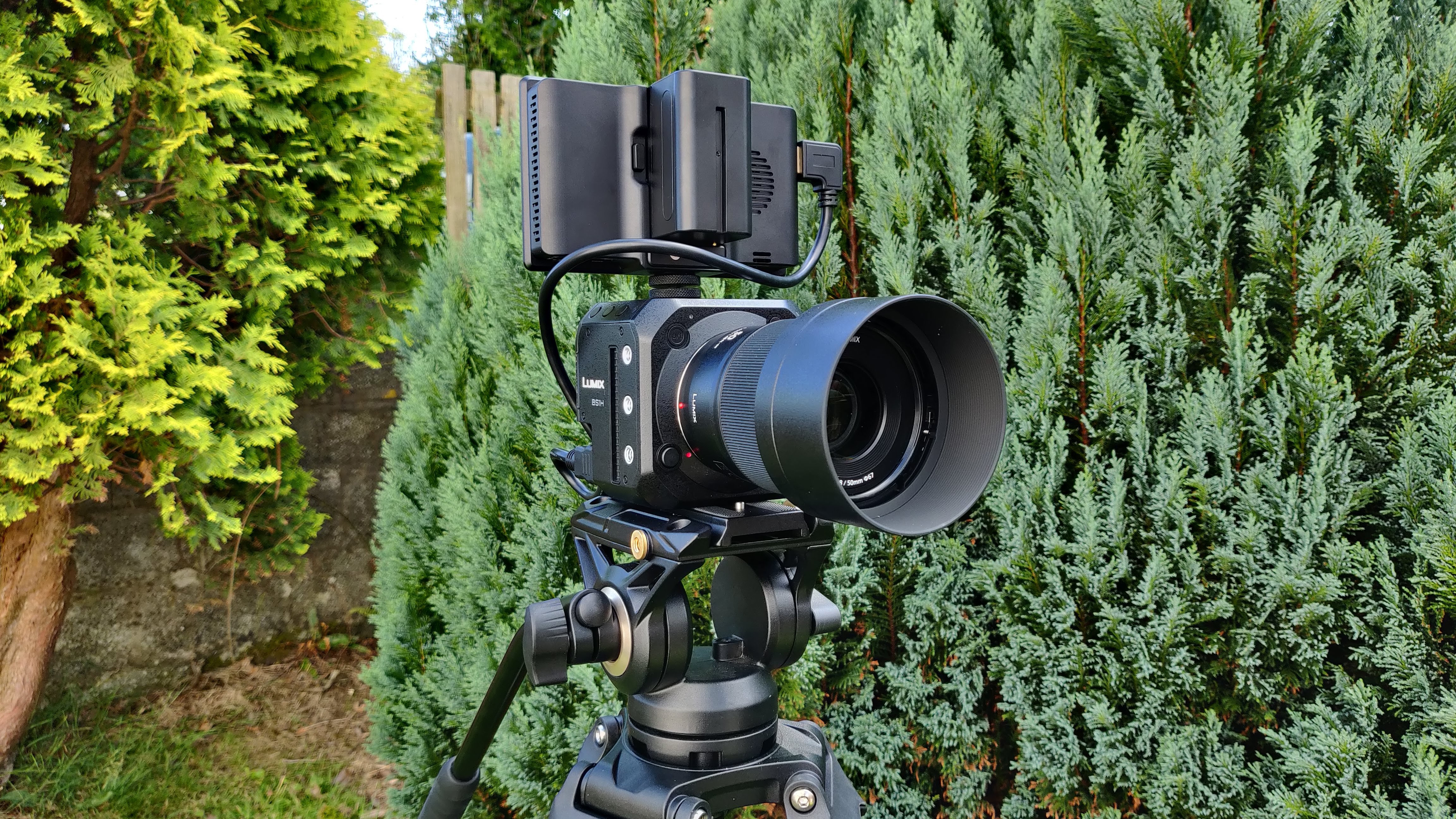
The Panasonic Lumix BS1H is a very compact powerhouse cinema camera, targeted at true filmmakers. It provides a small form factor with outstanding spec and I/O that means it can be used by solo filmmakers, right up to big productions without skipping a beat. It might seem to be highly-priced for essentially an S1H sensor in a box, but the price totally makes sense when you see the possibilities that such a camera can provide to the user.
Yes, you will have to buy external accessories to get it rigged up to perform, such as a monitor, media, side handle, battery etc. BUT you have to do this with every cinema camera however, not every cinema camera is as tiny as the BS1H and that’s where it shines. It provides the smallest form factor possible with the highest specs any filmmaker could want and is a very competitive alternative to the RED Komodo that is double the price!
Read more:
Best cinema cameras
Best Netflix-approved cameras
Best 4K cameras for video
Best cine lenses

For nearly two decades Sebastian's work has been published internationally. Originally specializing in Equestrianism, his visuals have been used by the leading names in the equestrian industry such as The Fédération Equestre Internationale (FEI), The Jockey Club, Horse & Hound, and many more for various advertising campaigns, books, and pre/post-event highlights.
He is a Fellow of the Royal Society of Arts, holds a Foundation Degree in Equitation Science, and holds a Master of Arts in Publishing. He is a member of Nikon NPS and has been a Nikon user since his film days using a Nikon F5. He saw the digital transition with Nikon's D series cameras and is still, to this day, the youngest member to be elected into BEWA, the British Equestrian Writers' Association.
He is familiar with and shows great interest in 35mm, medium, and large-format photography, using products by Leica, Phase One, Hasselblad, Alpa, and Sinar. Sebastian has also used many cinema cameras from Sony, RED, ARRI, and everything in between. He now spends his spare time using his trusted Leica M-E or Leica M2, shooting Street/Documentary photography as he sees it, usually in Black and White.

